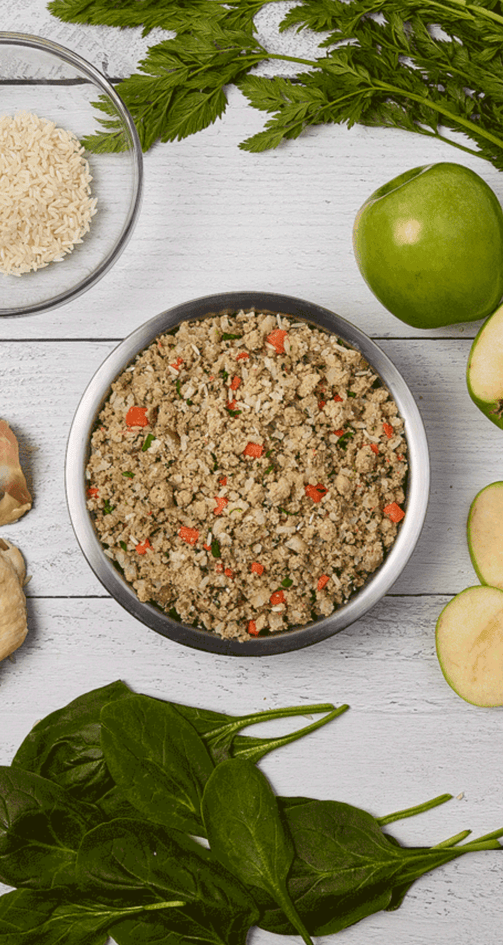
I am updating it to allow for an option to reduce calories for fixed dogs. This calculator does not account for spay/neuter.

Once you have determined your adult dog’s daily kcal needs / MER you can find out your adult dog’s maintenance nutrient needs, by visiting the nutrient calculator here. to kg converter below to find your dog’s weight in kilograms. This Feeding Calculator is meant to be used as a guideline or starting point for your pet who is eating a raw food diet. You do need to know your dog’s weight in kilograms to use this calorie calculator, so you can use the lbs. If you want to know the growth details for a mixed breed puppy. *You can learn about the method on the caloric feeding guide here. If you need to get the right calories for your pup, use our puppy calorie calculator. The allometric formulas used for this calculator are the NRC (2006) Daily Metabolizable Energy Requirements for Adult Dogs at Maintenance. Requirements Relative to Metabolizable Energy (ME) Calories are not a linear function of body weight.

This number is used in the calculation that is going to configure your dog’s Metabolizable Energy Requirements for maintenance (MER).Ī dog’s metabolizable energy requirements are the number of kCals they need to take in to maintain their weight through their current life stage & normal activity level. Step Two: Select a number + activity level description from the table below that best describes your dog. Visit the caloric feeding guide here to learn about resting energy requirements for dogs. Step One: Enter your adult dog’s weight to establish their minimum caloric intake amount per day which is also called their Resting Energy Requirements (RER).

Note: The ^ math symbol designates the following number as being an exponent of the preceding number.This calorie calculator for adult dogs will configure both your dog’s Resting Energy Requirements and their Metabolizable Energy Requirements for maintenance reflected in kcals. See what I mean when I say that these references and formulas can only be thought of as “ball park” figures? They are available for both dogs and cats, but are only designed to be used for “average” healthy adults that are in ideal body condition.īut guess what? The value in the WSAVA dog table for our hypothetical 45 pound dog is roughly 805 kcal, which doesn’t even fall within the range I mentioned above. If your eyes have glazed over with all this math, you can use tables like the ones put together by the World Small Animal Veterinary Association’s (WSAVA) Global Nutrition Committee instead. This pet’s actual needs may actually be anywhere between 860 kcal/day and 1,290 kcal/day. Remember, this is just a ball park figure. During nursing her caloric needs can be as much as six times her normal caloric needs, depending on her litter size and metabolism. During the last trimester of pregnancy, her caloric needs are 2-3 times her normal caloric needs. Here’s what the calculations look like for a neutered pet dog weighing 45 pounds that is at his or her ideal weight. A lot of breeders don’t understand the caloric requirements of a nursing mom. Maintenance Energy Requirement (MER) = appropriate multiplier x RER.From 5-12 months, 60 - 325 grams should be enough. From 0-3 months, 40 - 375 grams, and 3- 5 months from 80 - 615 grams. Resting Energy Requirement (RER) = 70 (body weight in kg)^0.75 It ultimately depends on your dogs needs.Divide a dog’s body weight in pounds by 2.2 to convert to kilograms (kg).The standard steps used by veterinarians to determine a dog’s caloric needs (otherwise known as their maintenance energy requirements) are as follows:

Calorie “calculators” or tables cannot take into account what might make an animal’s situation unique. Nutrition, including determining how many calories a pet should be taking in, is not a one-size-fits-all endeavor. Include your veterinarian in this conversation, particularly if your dog has any health problems or special dietary needs. Feed that number of calories, monitor the dog’s weight, body condition, and overall wellbeing, and adjust accordingly. Therefore, any number that you come up with needs to be viewed as an estimate only. Variations in metabolic rates can alter this figure by as much as 20 percent either way. First a caveat or two.Įven when taking into account a dog’s lifestyle, age, activity level, etc., it is impossible to mathematically determine exactly how many calories (or kilocalories as they are called in veterinary medicine) a pet needs. A couple of weeks ago in response to my post about the new AAFCO (Association of American Feed Control Officials) labeling requirement to include calorie counts on all pet foods, Tom Collins asked for “guidelines for recommended daily calorie intake for various pets, age groups, lifestyles, etc.” This isn’t as easy as you might think, but I can provide some guidelines that can help.


 0 kommentar(er)
0 kommentar(er)
